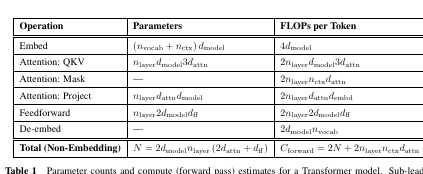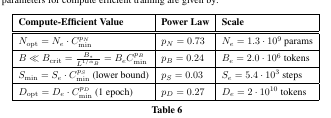In the realm of artificial intelligence, especially in natural language processing (NLP), one of the significant challenges researchers face is improving model performance while managing resource constraints. The paper 'Scaling Laws for Neural Language Models' presents valuable insights into how various factors such as model size, dataset size, and training compute can be optimized to enhance performance in a quantifiable manner.
Key Concepts
The study begins by investigating empirical scaling laws that govern the performance of language models as functions of three primary factors: model parameters size (N), dataset size (D), and compute used for training (C). It emphasizes a power-law relationship among these variables, indicating that performance improves steadily with increases in any one of these factors, provided the others are scaled appropriately.
Loss Reduction and Scaling
The loss function (L(N, D)), which reflects how well a model performs, is shown to depend primarily on model parameters (N) and dataset (D). The research argues that as we increase model size while maintaining a fixed dataset, the loss decreases according to a predictable scaling law. Specifically, the loss can be approximated as:
[
L(N) \propto \left(\frac{N}{D}\right)^{\alpha_N}
]
where (\alpha_N) is a constant derived from empirical testing, which suggests that larger models with sufficient data yield lower loss rates[1].
Performance Metrics

The paper outlines critical metrics for evaluating model efficiency, illustrating a clear trend: larger models require fewer training samples to achieve similar performance levels. Figure data in the study indicates that the optimal model size increases with the computation budget available, illustrating that higher compute allows for more complex models to be trained effectively.
Sample Efficiency
Sample efficiency is a central theme in the analysis. It is observed that larger models generally show better sample efficiency. This means that for a given performance level, larger models can require fewer training tokens compared to smaller models. This relationship is quantified, showing that as training progresses, the number of samples needed to reduce loss significantly decreases for larger models[1].
Optimal Allocation of Compute
The authors propose a strategy for optimal allocation of the training compute budget, which is particularly relevant for researchers and practitioners working with large-scale language models. They suggest that to achieve maximum efficiency, researchers should ideally allocate compute resources to increase model size before expanding dataset size. This guidance is grounded in empirical observations that show a diminishing return on performance as simply adding more data without adjusting model architecture can lead to suboptimal outcomes[1].
Critical Batch Size
Another interesting finding from the study is the concept of critical batch size, denoted as (B_{crit}). The paper establishes that as model and dataset sizes increase, the optimal batch size increases, which in turn relates to the overall compute budget. The results suggest that adjusting the batch size appropriately can lead to noticeable improvements in performance during training, reinforcing the importance of customized training setups[1].
Recommendations for Future Research

The scaling laws outlined in this research encourage the exploration of varied architectural models and data types in NLP. They note that researchers should not only focus on increasing model size but also consider the implications of dataset variety and quality. The models trained on diverse data tend to generalize better, highlighting the necessity of maintaining a comprehensive and rich dataset for training large NLP models[1].
Conclusion
In conclusion, 'Scaling Laws for Neural Language Models' provides a framework for understanding how to optimize language models in a resource-efficient manner. By identifying clear relationships between model parameters, dataset size, and compute, it offers both a theoretical foundation and practical guidance for future research in the field. As artificial intelligence continues to evolve and scale, understanding these dynamics will be crucial for deploying effective and efficient language models across various applications. The insights present a pathway for improved methodologies in training algorithms and architecture choices that could significantly influence the future of NLP and its applications.
Get more accurate answers with Super Pandi, upload files, personalized discovery feed, save searches and contribute to the PandiPedia.
Let's look at alternatives:
- Modify the query.
- Start a new thread.
- Remove sources (if manually added).